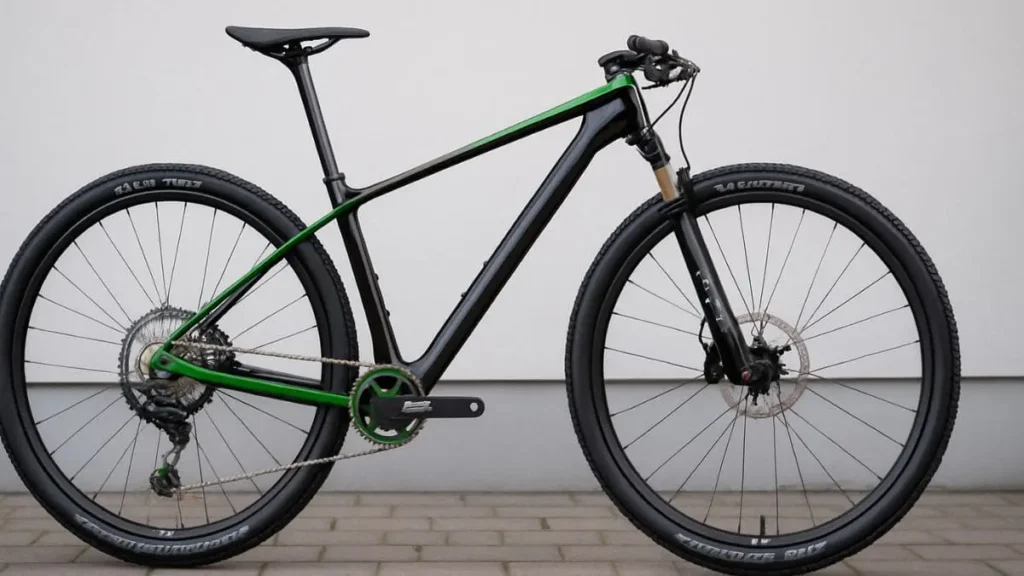Shimano has long been a leader in drivetrain innovation, and its XTR Di2 groupset is no exception. Originally introduced to bring electronic shifting to the demanding world of mountain biking, XTR Di2 (Digital Integrated Intelligence) is Shimano’s top-tier electronic MTB drivetrain. Designed for elite XC and trail riders, it combines precise, programmable shifting with bulletproof durability, making it one of the most advanced MTB systems on the market.
This review explores the performance, features, pros and cons, and whether XTR Di2 is still worth it in 2025.
What is Shimano XTR Di2?
Shimano XTR Di2 is an 11-speed electronic shifting system for mountain bikes, designed with the rigors of off-road riding in mind. It’s essentially the mountain bike counterpart to the road-focused Dura-Ace Di2, offering lightning-fast shifting, customizable functions, and incredibly precise drivetrain control.
Unlike mechanical groupsets, Di2 uses small servo motors to move the derailleurs, controlled by a wired or wireless signal from the shifter. The result is instant, accurate shifting without the need for cable tension adjustments.
Shimano XTR Di2 Review
Key Features of XTR Di2
Electronic Shifting (Di2)
Shifts are made through electrical impulses, not mechanical cables, making them faster, more consistent, and immune to cable stretch or contamination.
Also read: DOGMA F DURA-ACE Di2 Review: Pinarello’s Pinnacle of Performance
Synchro Shift and Semi-Synchro Shift
Riders can fine-tune their shifting setup on the XTR Di2 system through the Shimano E-Tube Project app. With Synchro Shift, a single shifter can control both the front and rear derailleurs, automatically adjusting the front ring based on the rear gear position. As you shift the front chainring, Semi-Synchro ensures the rear derailleur adapts for optimal gear alignment.
Customization
You can customize shift speed, and button function, and even configure the setup for left-hand or right-hand dominant shifting. It’s like having a drivetrain built exactly for your preferences.
Internal Battery and Wiring
The system runs off a central rechargeable battery, hidden in the seatpost or downtube. A single charge offers power that lasts from several weeks up to a few months, based on how often you ride.
Rugged Reliability
Built for harsh environments, XTR Di2 is water-resistant, mud-proof, and trail-tough, making it ideal for aggressive riders who ride in all conditions.
Also read: Cannondale Topstone 4 Review: Is This the Best Budget Gravel Bike Out There?
Performance on the Trail
- Shifting Speed and Accuracy
Perhaps the most noticeable benefit of XTR Di2 is the speed and reliability of shifting. Whether you’re grinding up a technical climb or dropping into a rocky descent, the derailleur moves precisely and without hesitation. Unlike mechanical systems, there’s no lag, mis-shift, or need to mash the shifter harder when under load.
- Front Derailleur Shifting
Shifting the front chainring under torque has traditionally been a challenge. With XTR Di2’s automated front shifting, gear transitions are seamless. The auto-trim feature also ensures there’s no chain rub, no matter your rear gear selection.
- Ergonomics
The shifter buttons are light to the touch and require no effort to operate. Plus, button placement can be fine-tuned to suit your hand size and riding style. Many riders also love the ability to shift multiple gears with a single press—perfect for race starts or sudden climbs.
- Durability
While some riders worry about electronics on a rugged trail, the XTR Di2 has proven to be incredibly durable. It’s been tested through mud, rain, snow, and hard crashes—holding up better than many expect.
Pros and Cons
Pros
- Lightning-fast, reliable shifting
- Programmable features and shift logic
- Reduced maintenance (no cable tension issues)
- Customizable ergonomics and performance
- Seamless front shifting with Synchro mode
- Long battery life
- Clean cockpit with fewer cables
Cons
- Premium price tag
- Installation can be complex (requires wiring and setup)
- 11-speed, while some modern systems offer 12-speed
- Compatibility is limited to Shimano’s Di2 ecosystem
- May be overkill for casual or beginner riders
Who Should Use XTR Di2?
The Shimano XTR Di2 is best suited for:
- Cross-country racers and endurance riders who need ultra-reliable performance
- Trail and marathon riders who value smooth, precise shifting under varying loads
- Tech-savvy riders who love customizing their bikes and fine-tuning components
- Cyclists who ride in harsh environments where mechanical systems may falter
Is Shimano XTR Di2 Still Worth It?
Yes—if you value precision and tech-forward performance. While Shimano has since moved toward integrating wireless Di2 into newer road and gravel groupsets, XTR Di2 remains a solid, wired platform that delivers consistent results.
Some newer 12-speed mechanical drivetrains like Shimano Deore XT 12-speed or SRAM GX Eagle AXS offer great competition, but the XTR Di2 holds its own with clean shifting, smart logic, and refined build quality.
That said, it’s not for everyone. If you’re a beginner, or if your budget is tight, a mechanical drivetrain may offer more bang for your buck.
Conclusion
Shimano’s XTR Di2 groupset delivers cutting-edge electronic shifting technology designed specifically for off-road adventures. With high-end precision, reliability, and smart features like Synchro Shift, it’s still a top-tier option for elite MTB riders in 2025.
It’s expensive, sure—but for those who demand the best and want a drivetrain that works as hard and intelligently as they do, the XTR Di2 delivers a premium experience on every climb, descent, and sprint.
